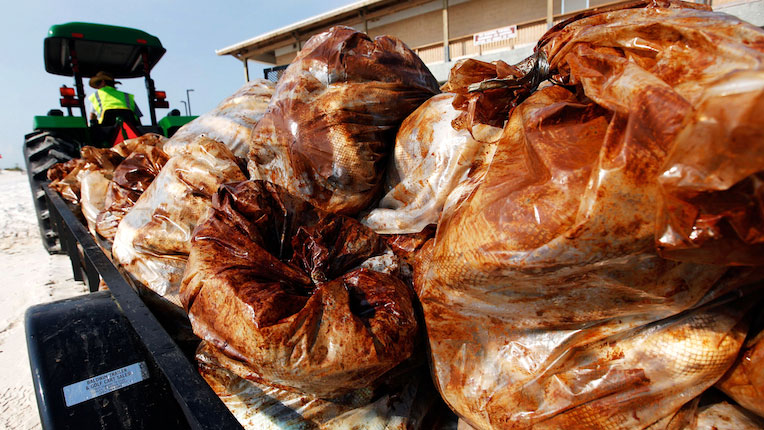Disposing the Waste

Fears about health and safety did not die with the well. Some Gulf residents continued to believe that BP had used dispersants onshore, nearshore, at night, and without government approval, and that it had continued using them after it capped the well. The Commission has not seen credible evidence supporting these claims.
Residents also had to cope with the miles of used boom and other debris. Despite the typical spill-responder uniform of rubber gloves and protective coveralls, BP planned to send the thousands of tons of oily debris generated over the summer to ordinary municipal landfills. Wastes from oil exploration and production are classified as non-hazardous by law and do not require specialized disposal. Although the federal government generally does not supervise the disposal of non-hazardous waste, in late June the Coast Guard and the Environmental Protection Agency (EPA) issued a directive requiring BP to test its waste for hazardous elements, publicize the results, and consult with the communities where the waste was to be stored. In addition, EPA announced it would conduct its own twice-monthly testing of the debris and would post the results online.
As of November 17, 2010, EPA's tests had not shown any of the waste to be hazardous. As BP and EPA implemented the waste directives, environmental justice activists argued that BP was dumping the debris disproportionately in poor and non-white communities.
